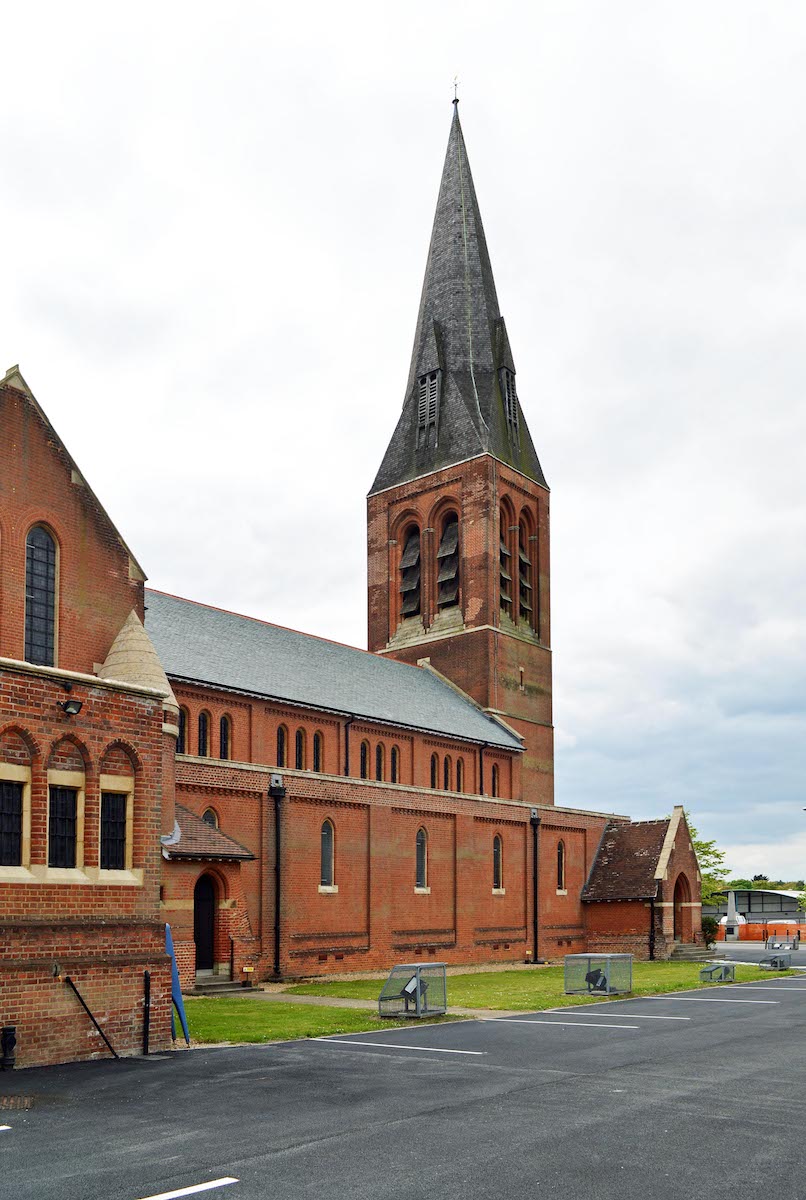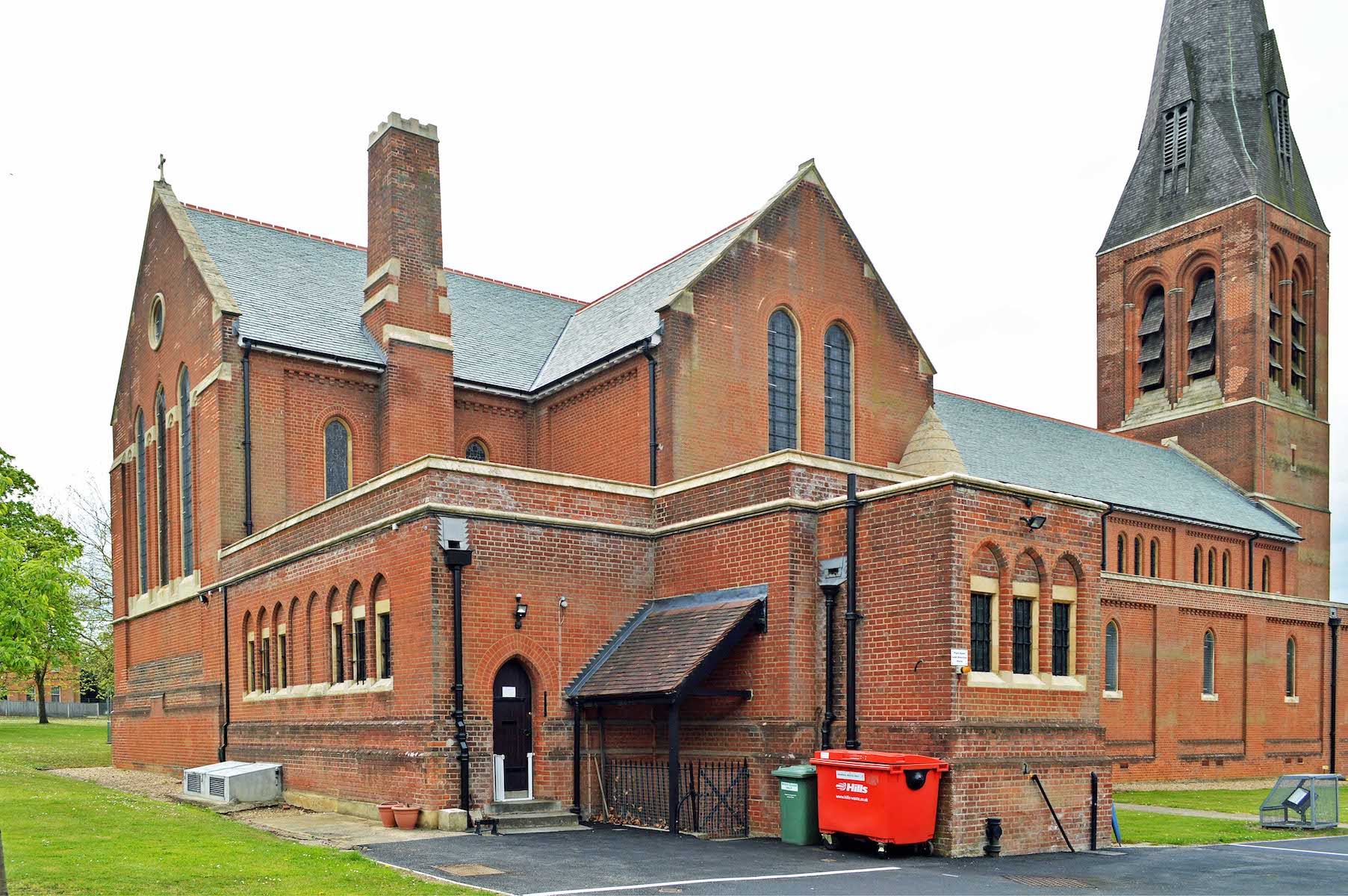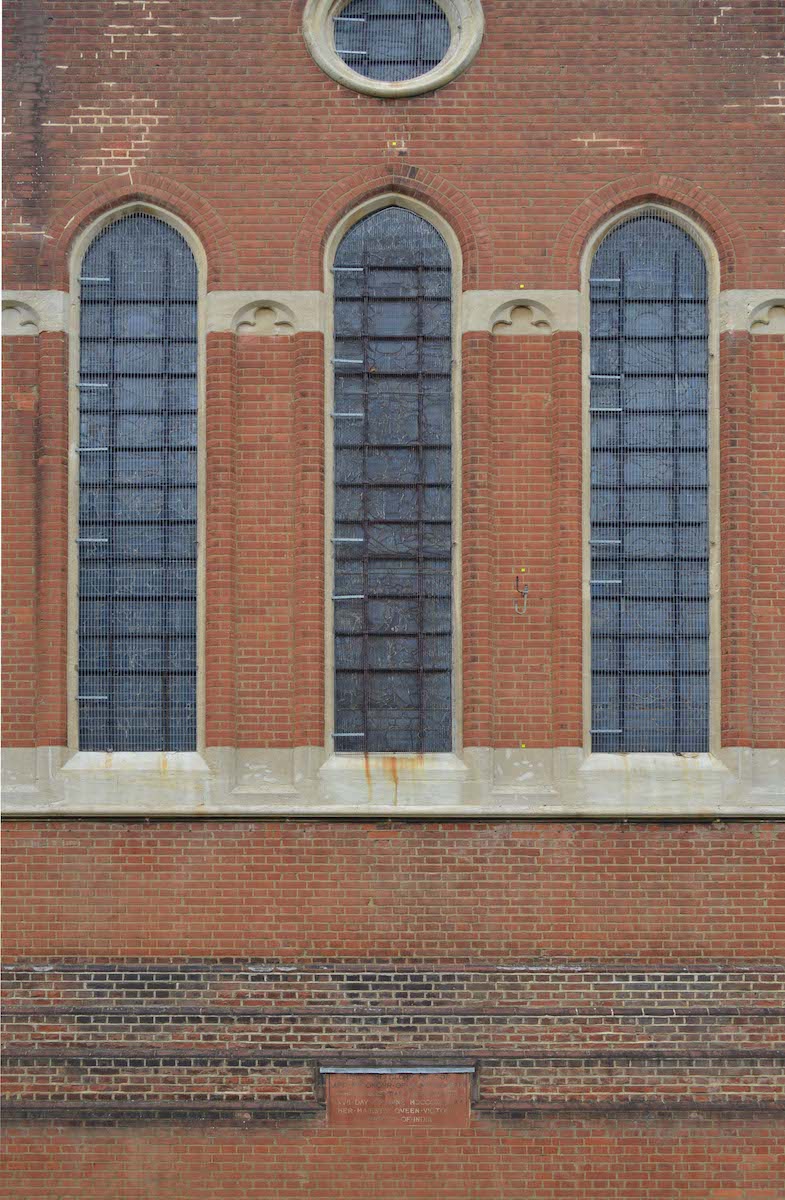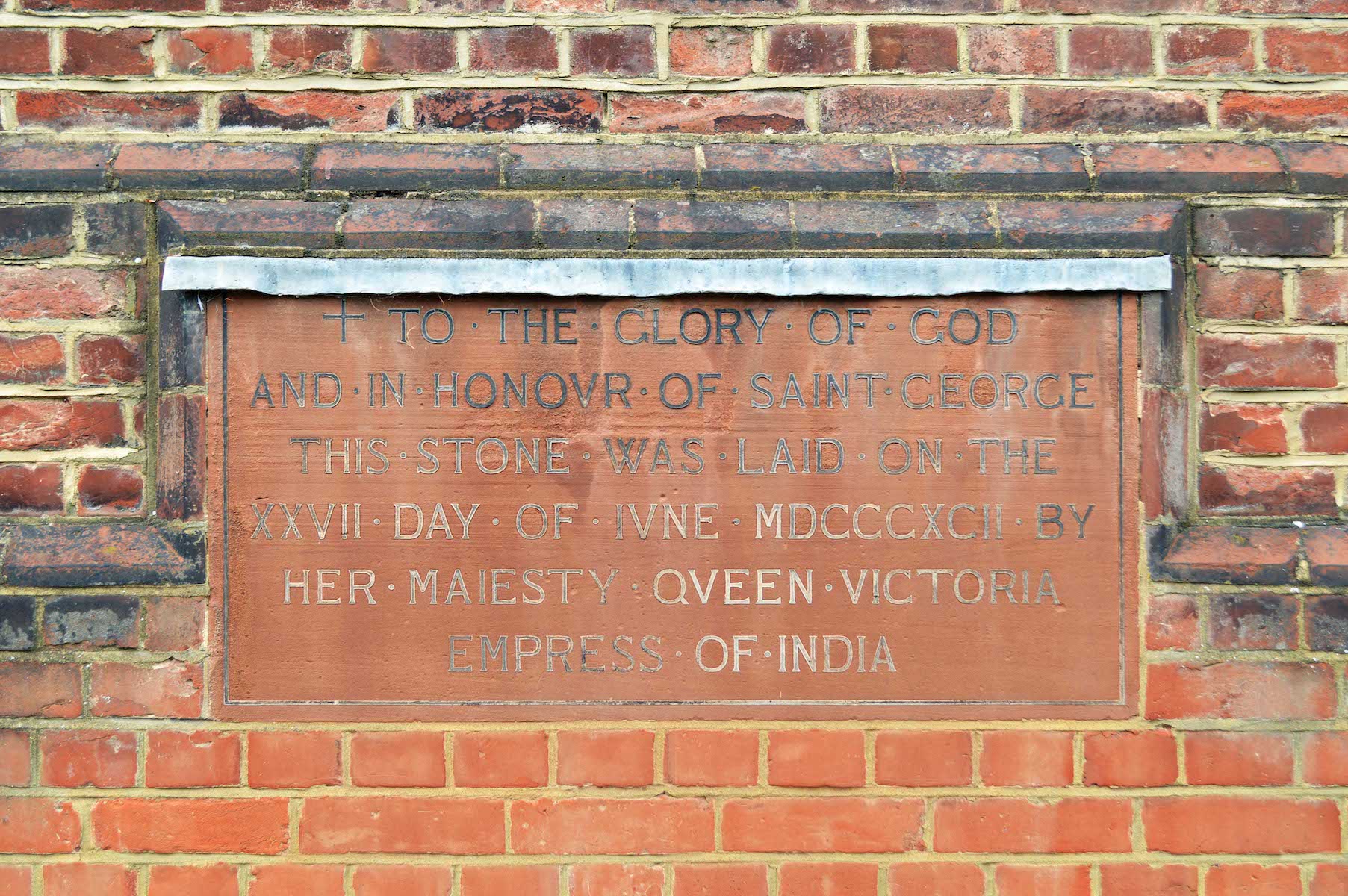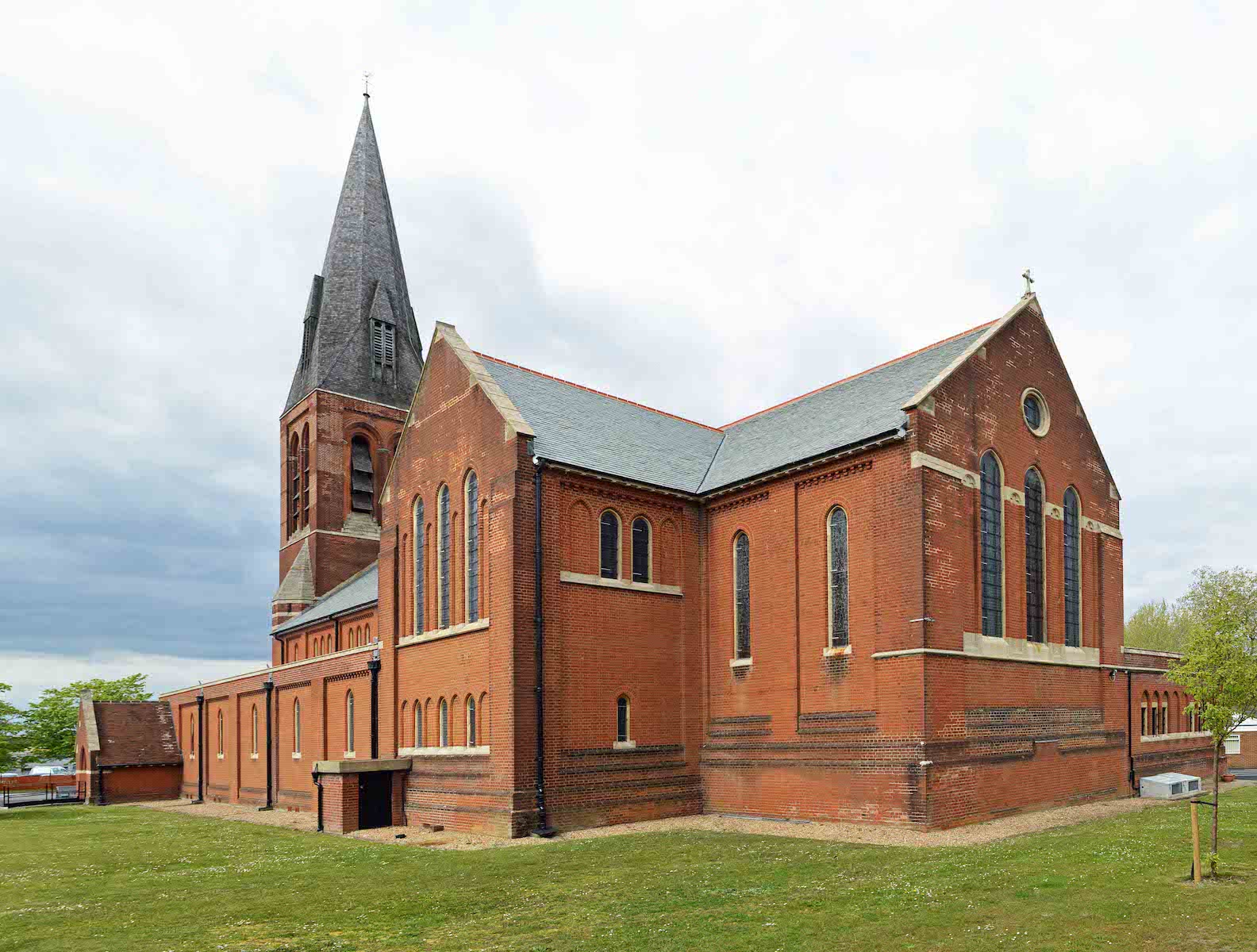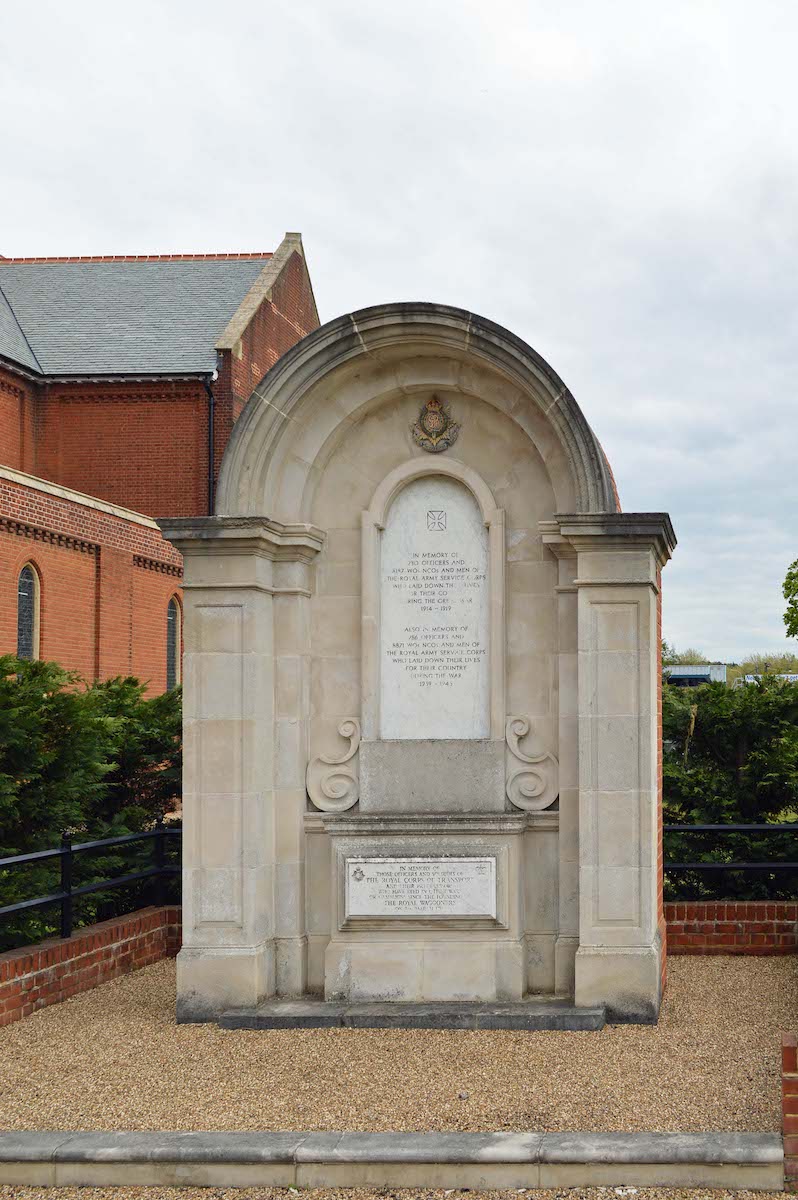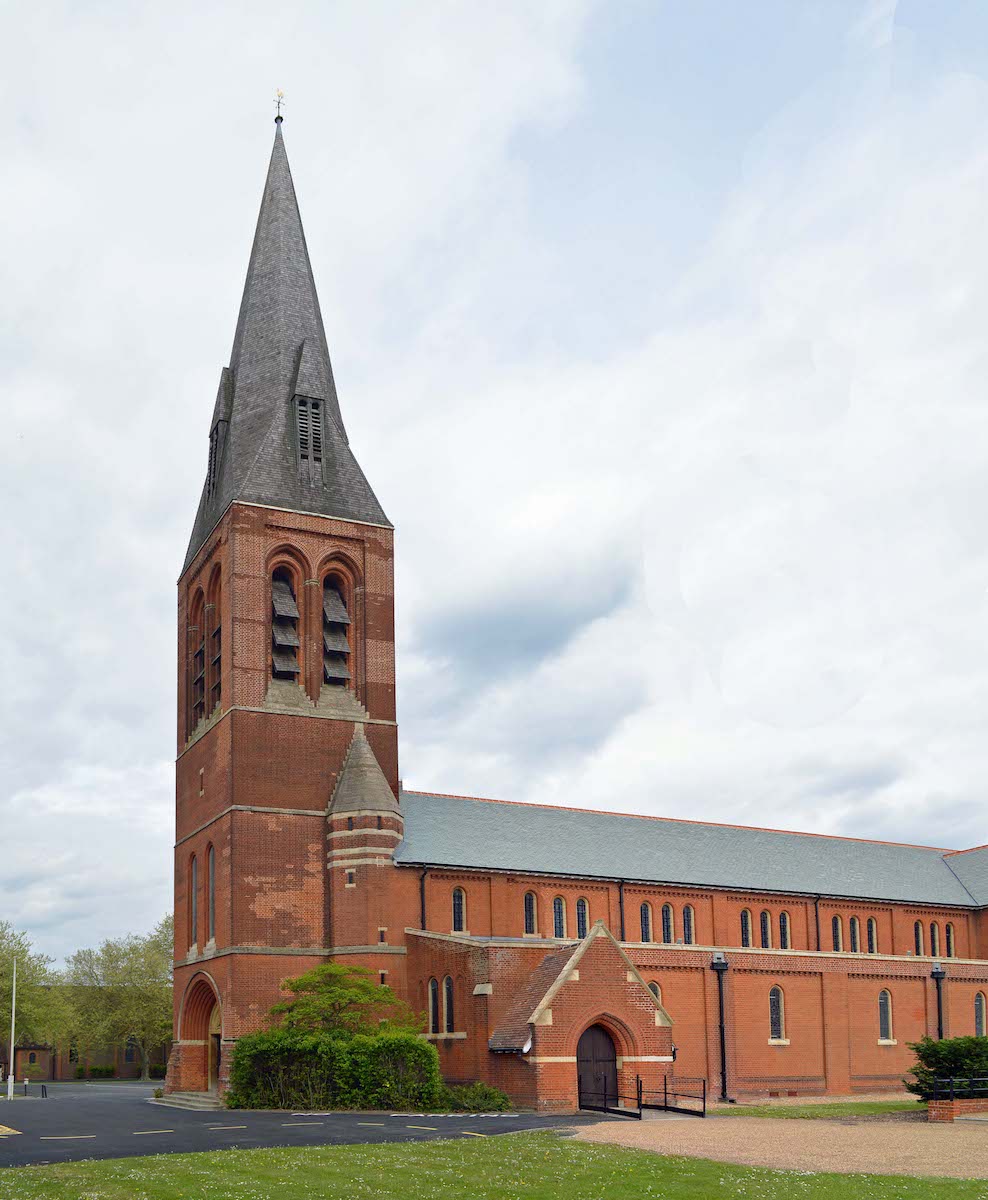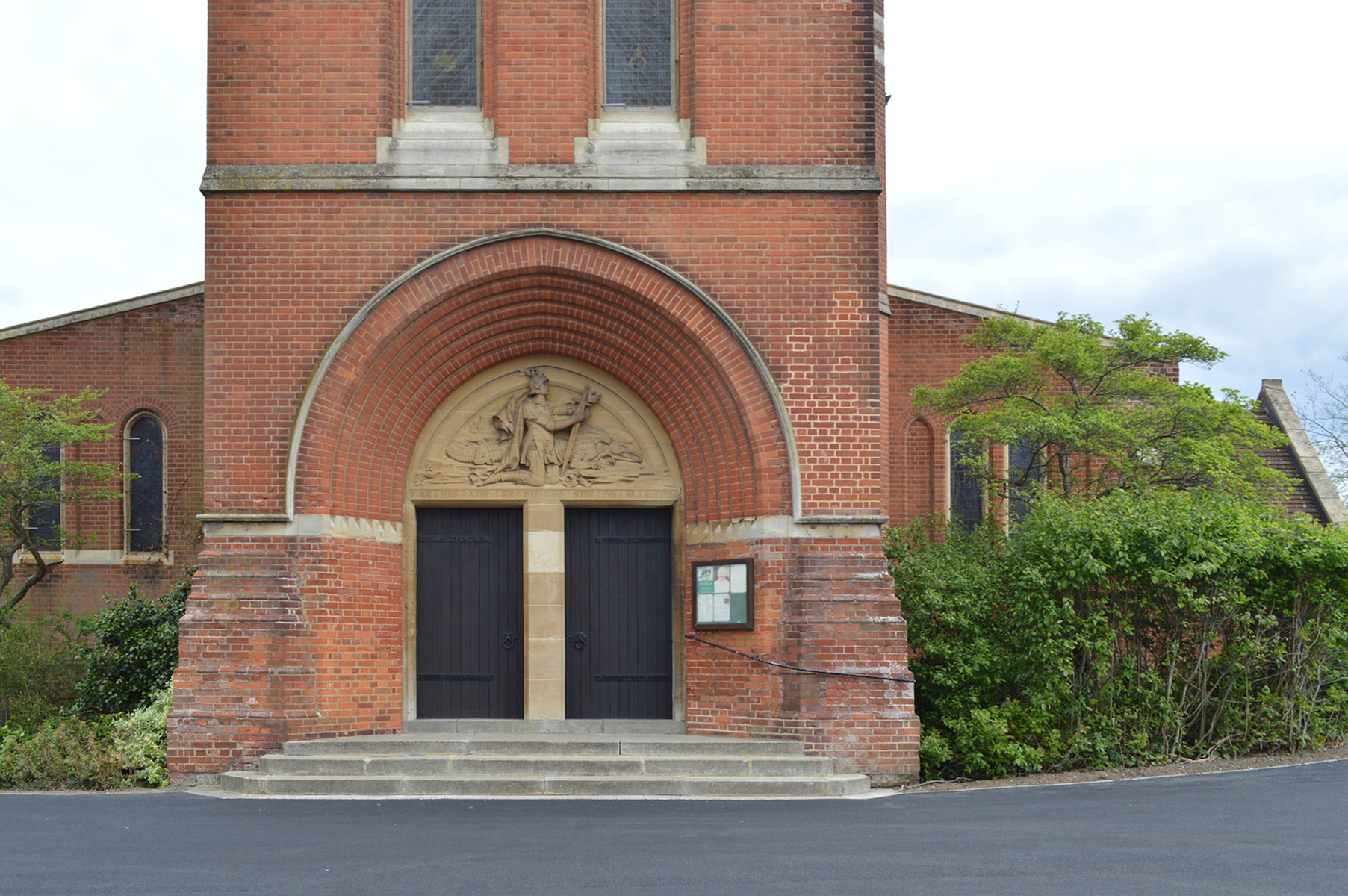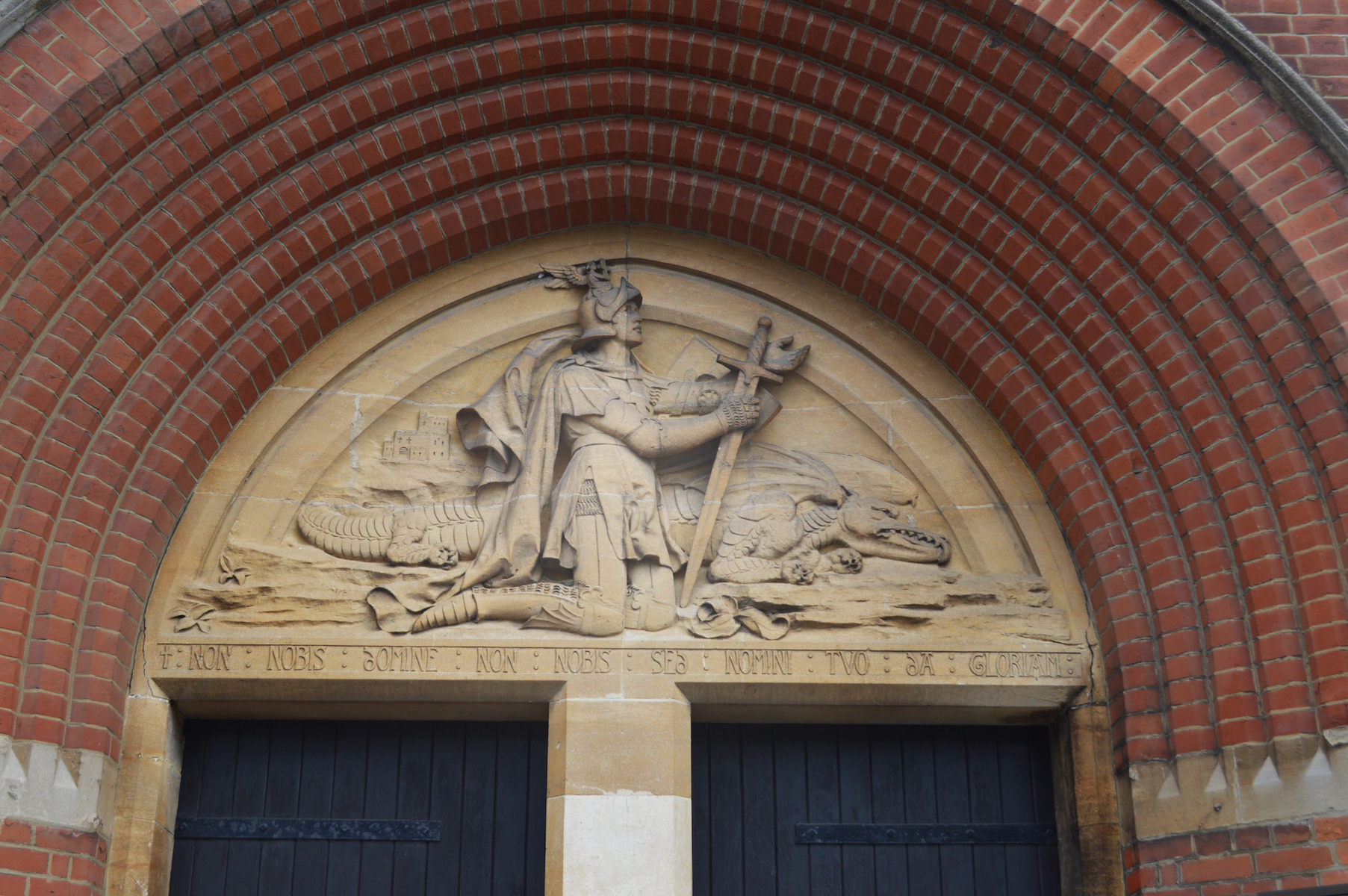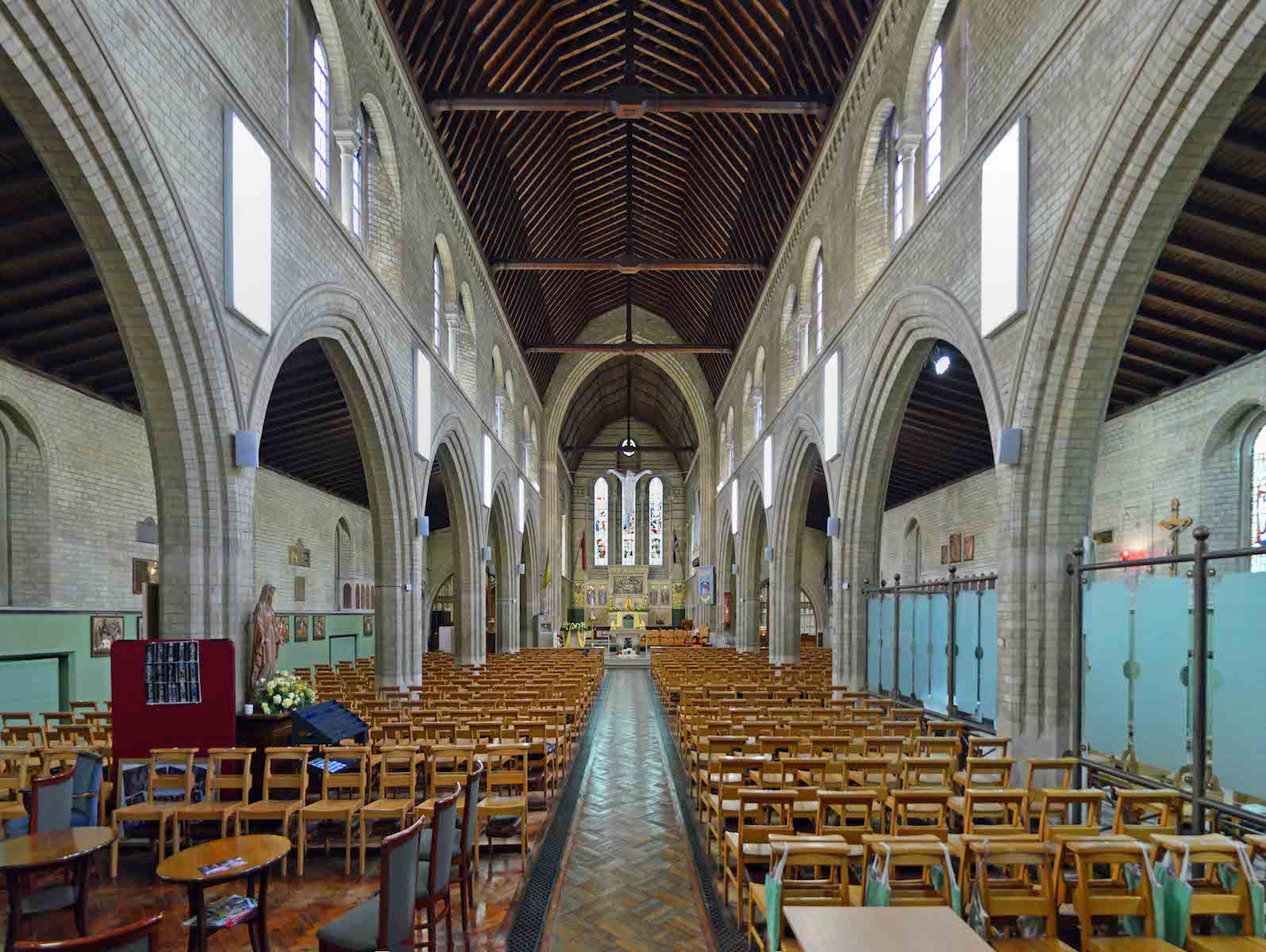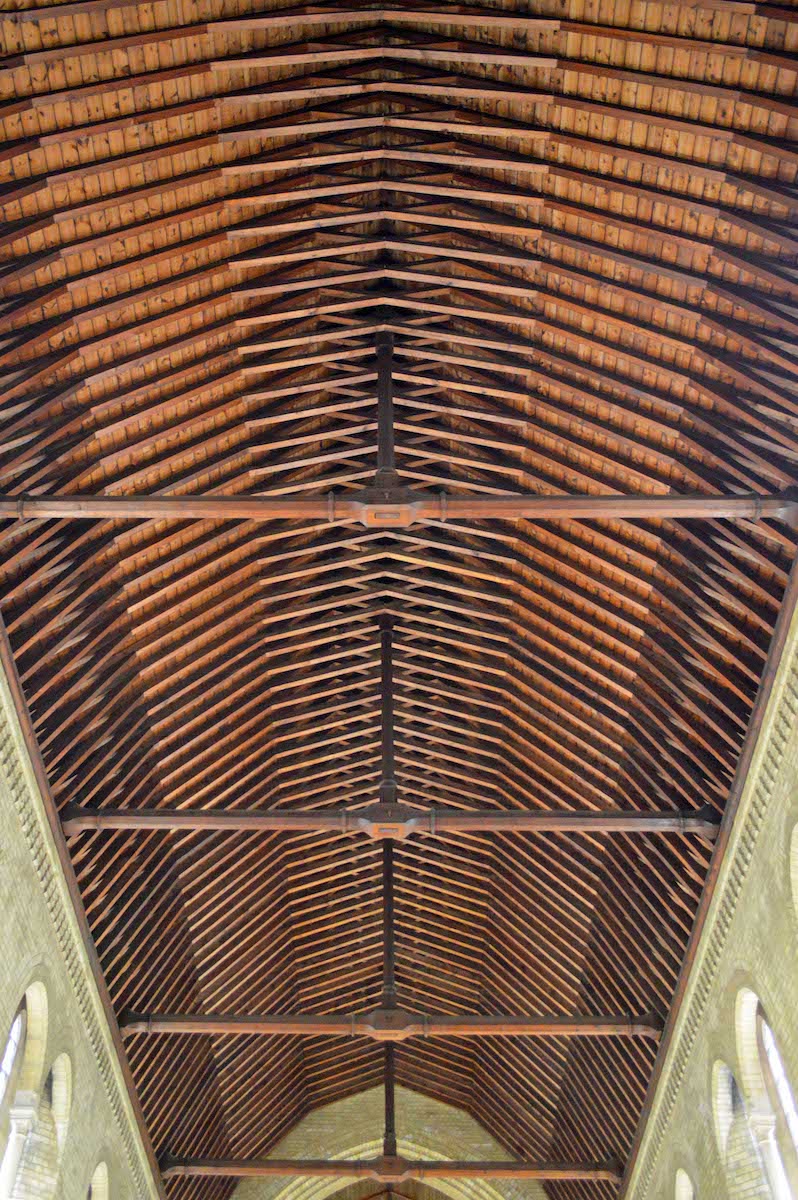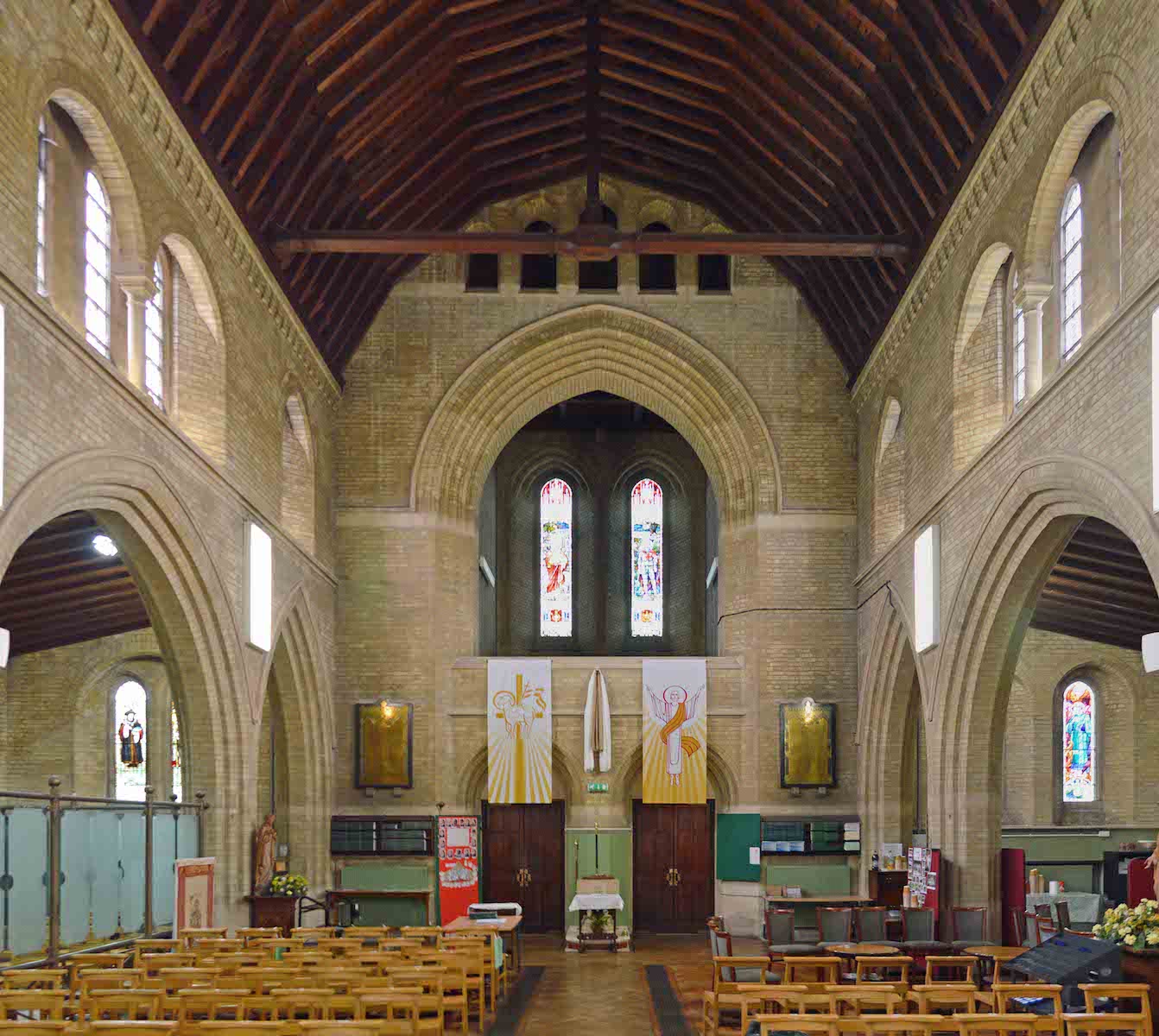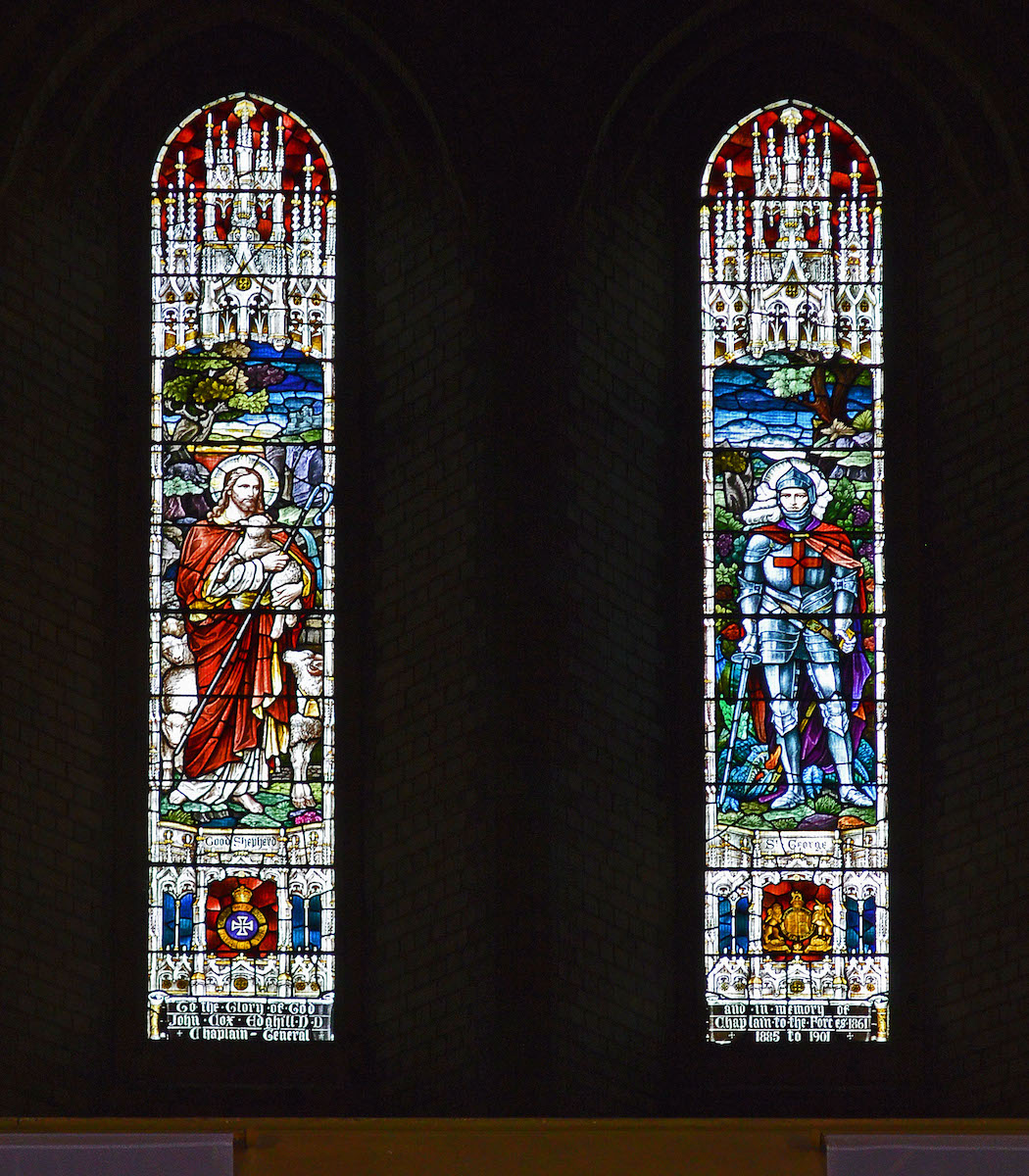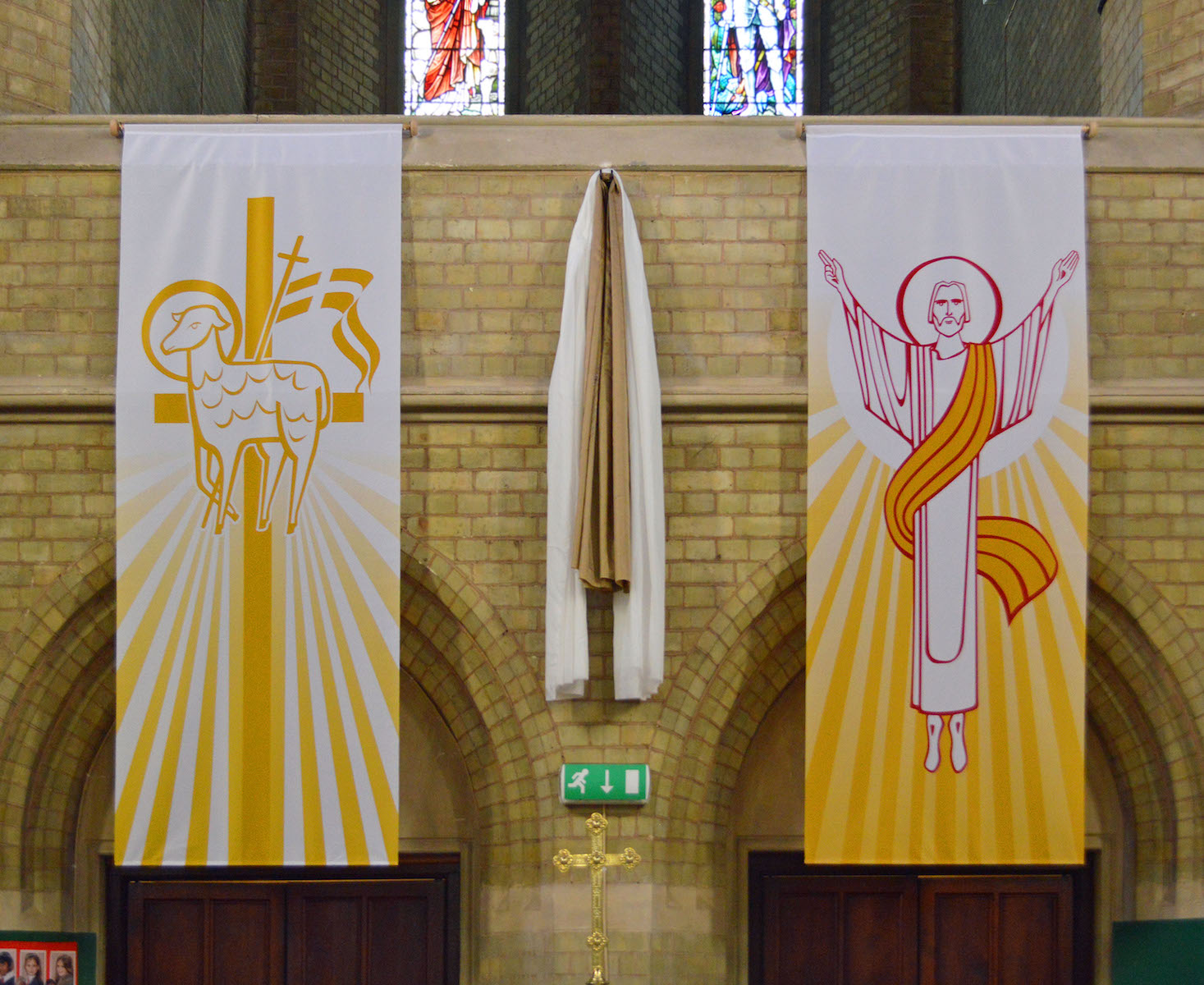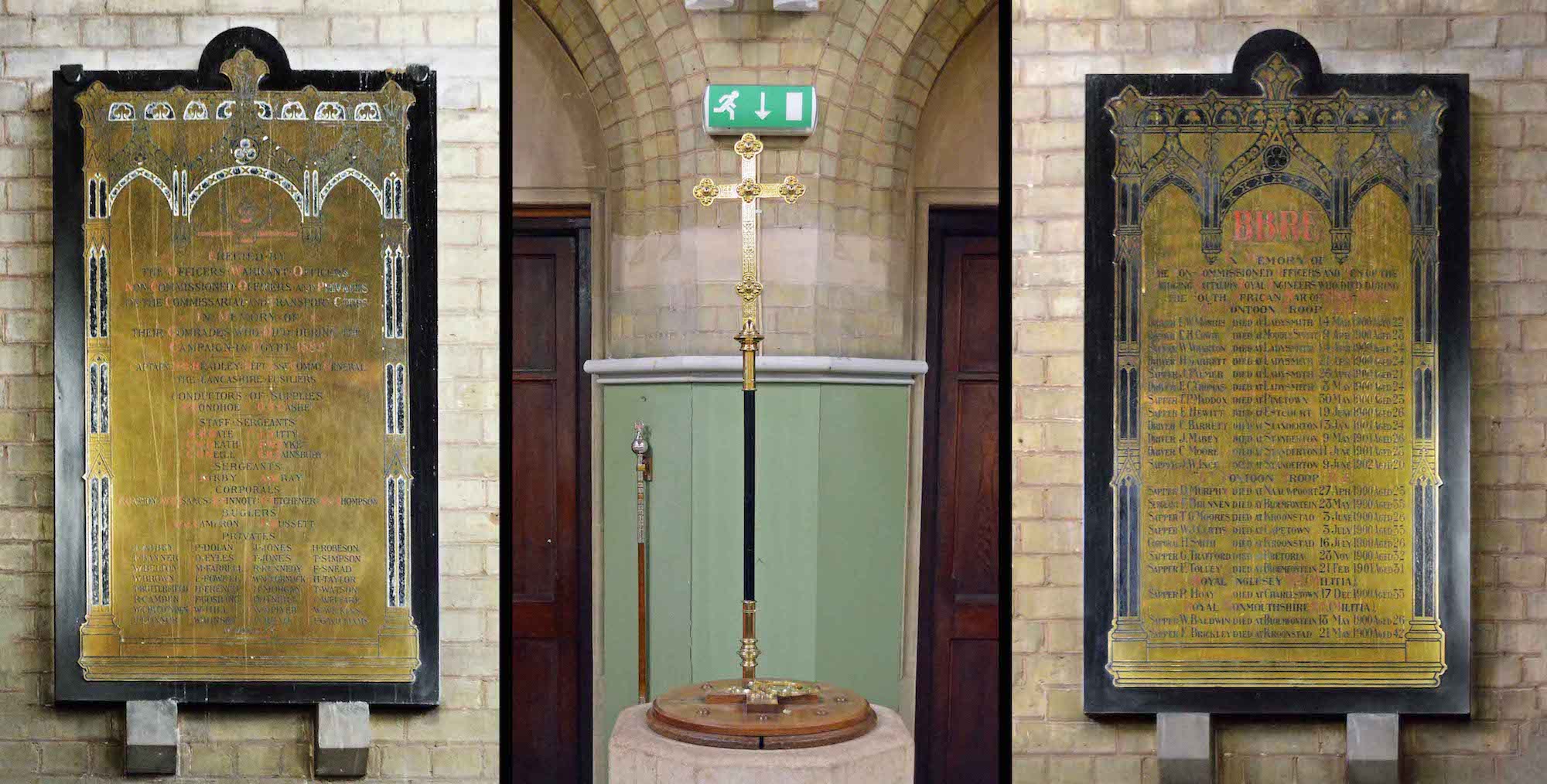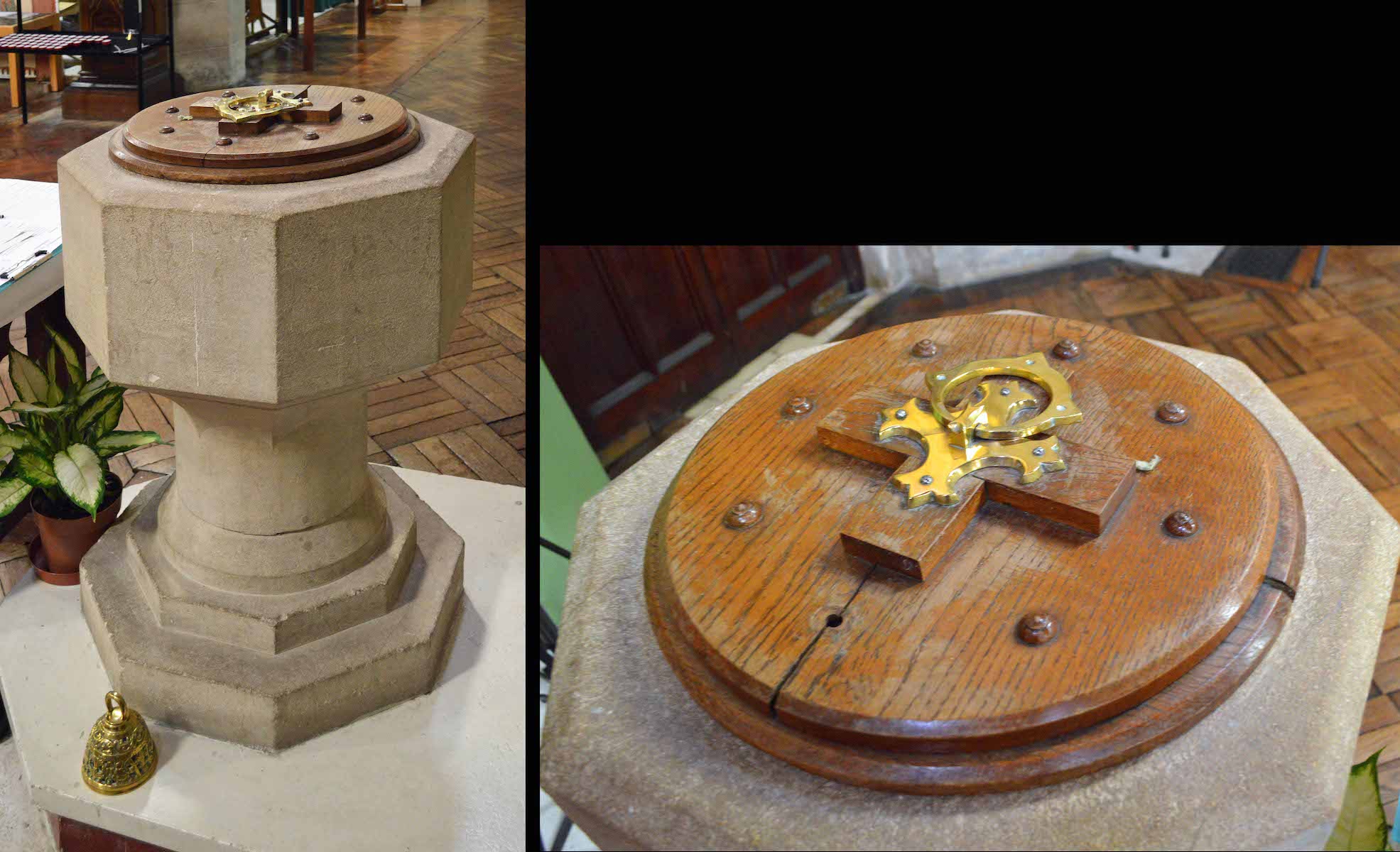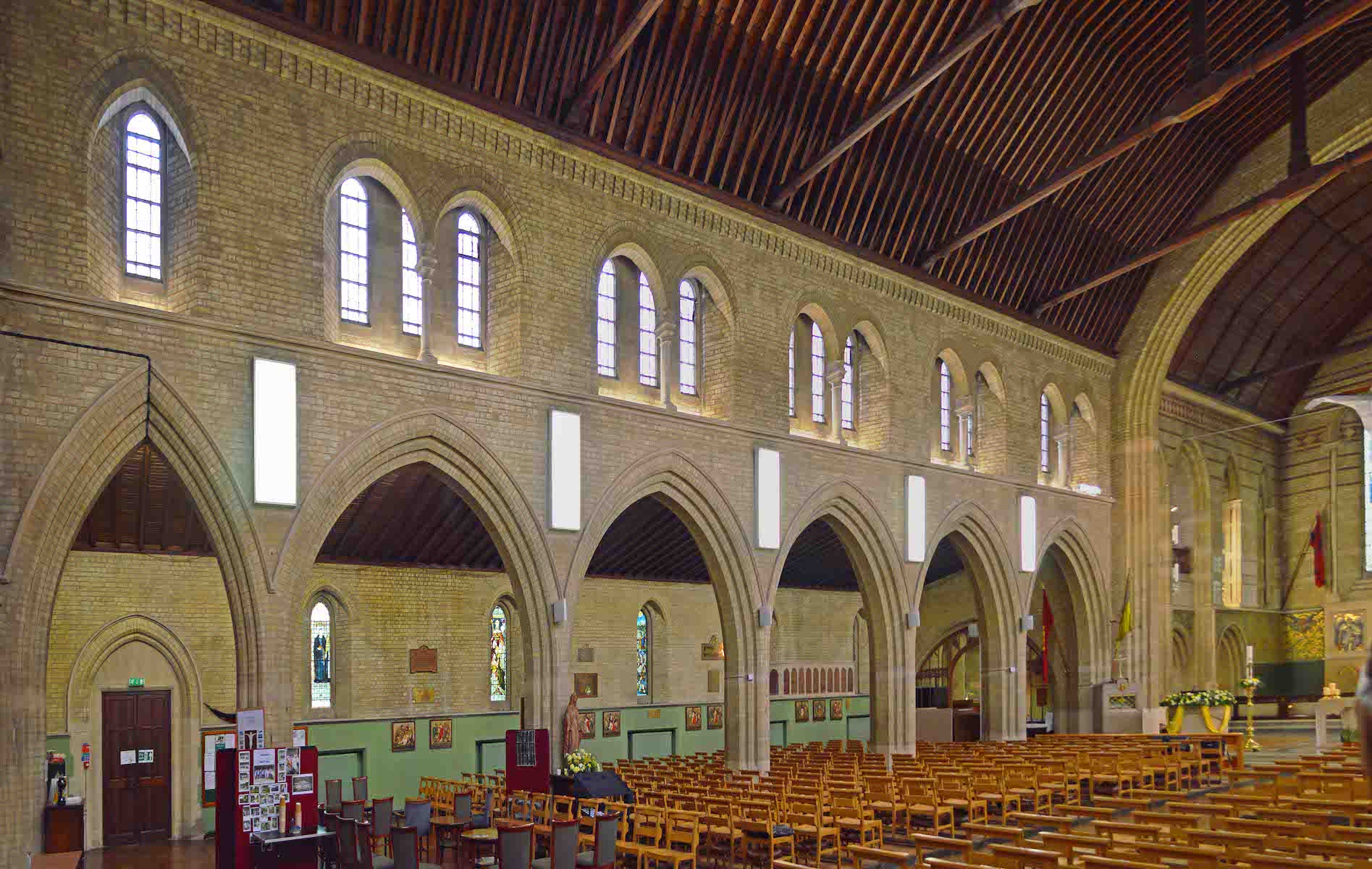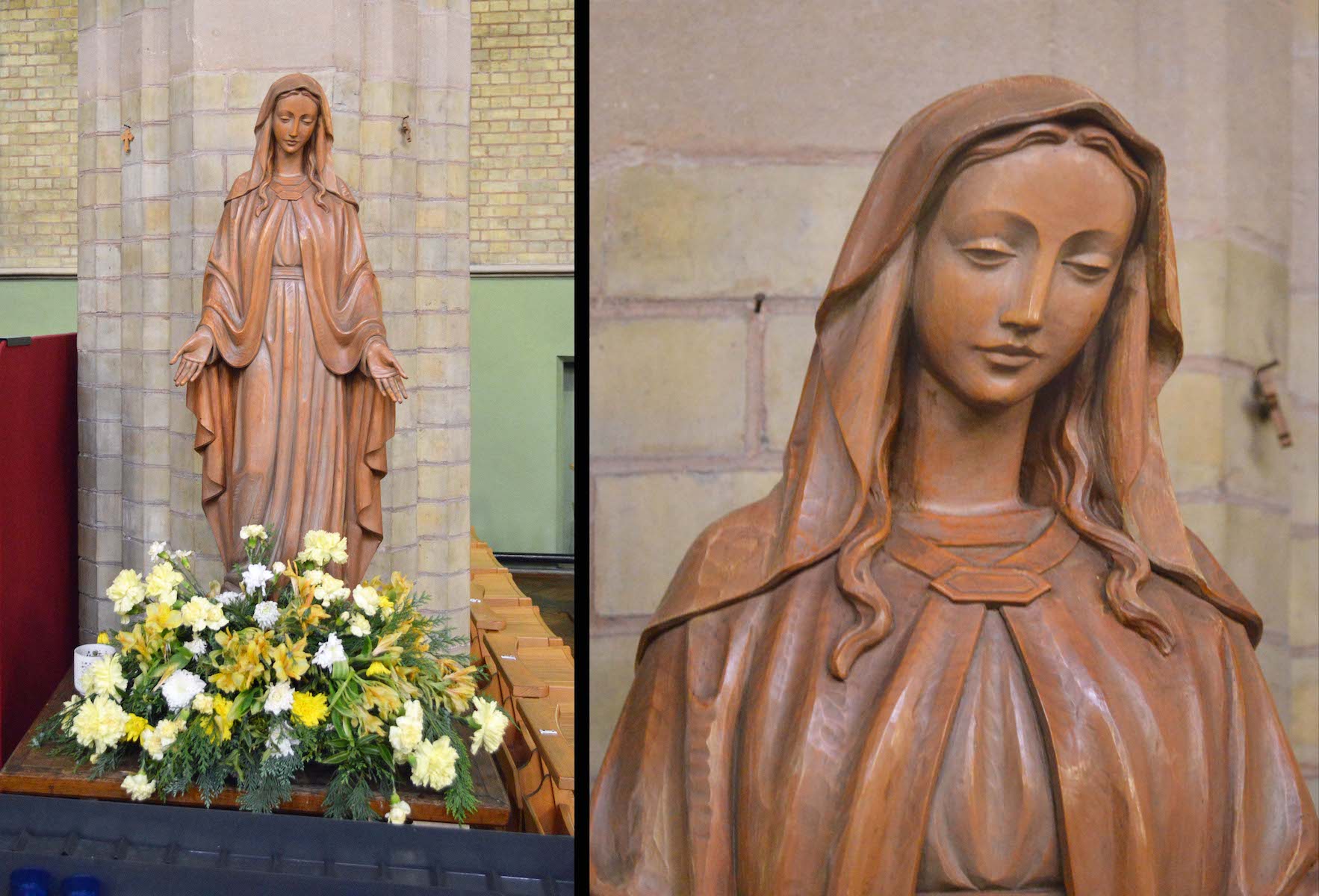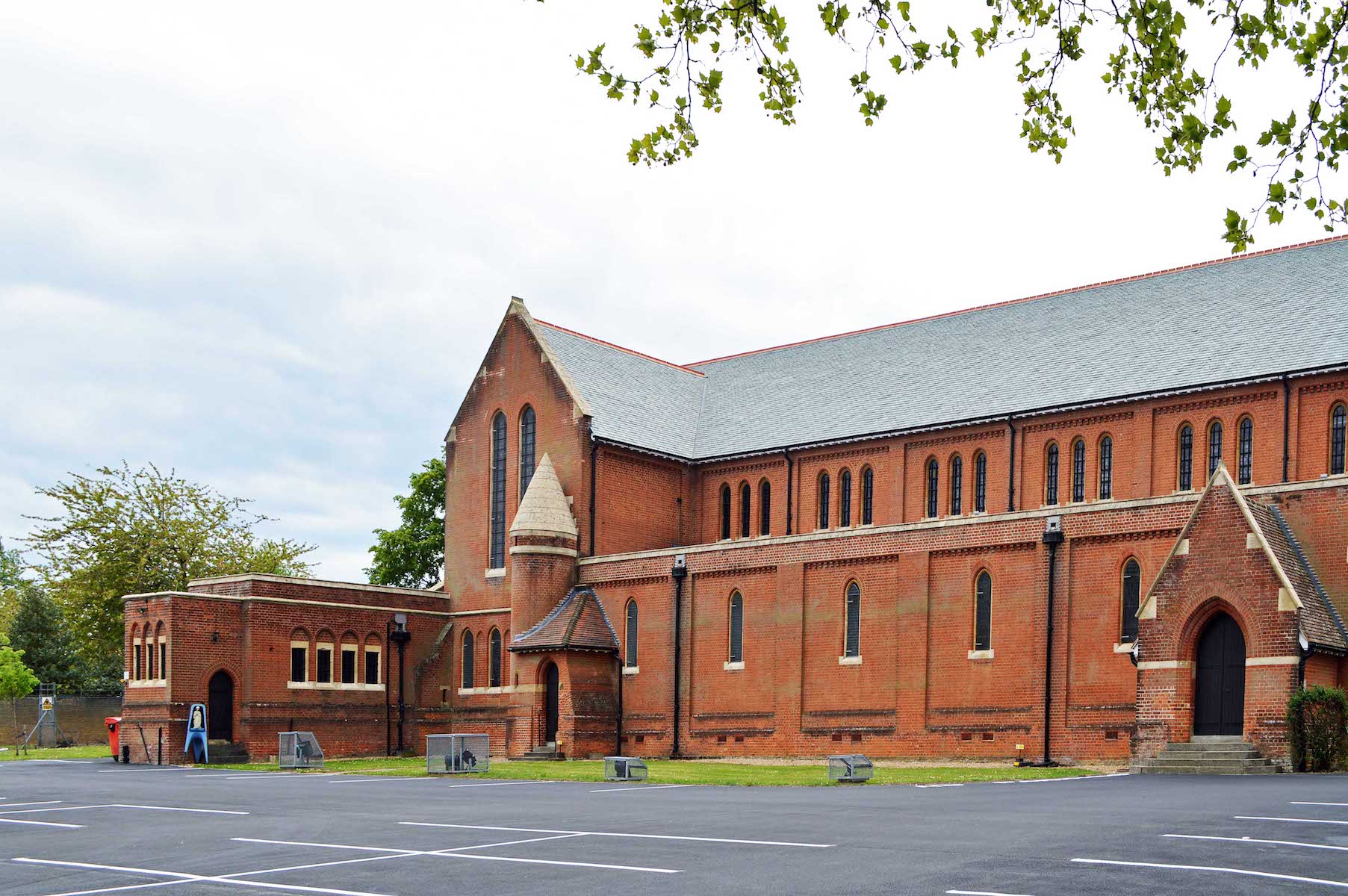
We begin our exploration of this Cathedral in the carpark to the North. We then walk around the building in a clockwise direction. ••• The Cathedral Church of St Michael and St George serves as the Roman Catholic Cathedral for the Bishopric of the Forces. Located on Queens Avenue in Aldershot, England, the building was originally intended to be the principal church for the Anglican chaplaincies of the British Army but since 1973 it has been the seat of the Roman Catholic Bishop of the Forces.
2. CONICAL TOWER
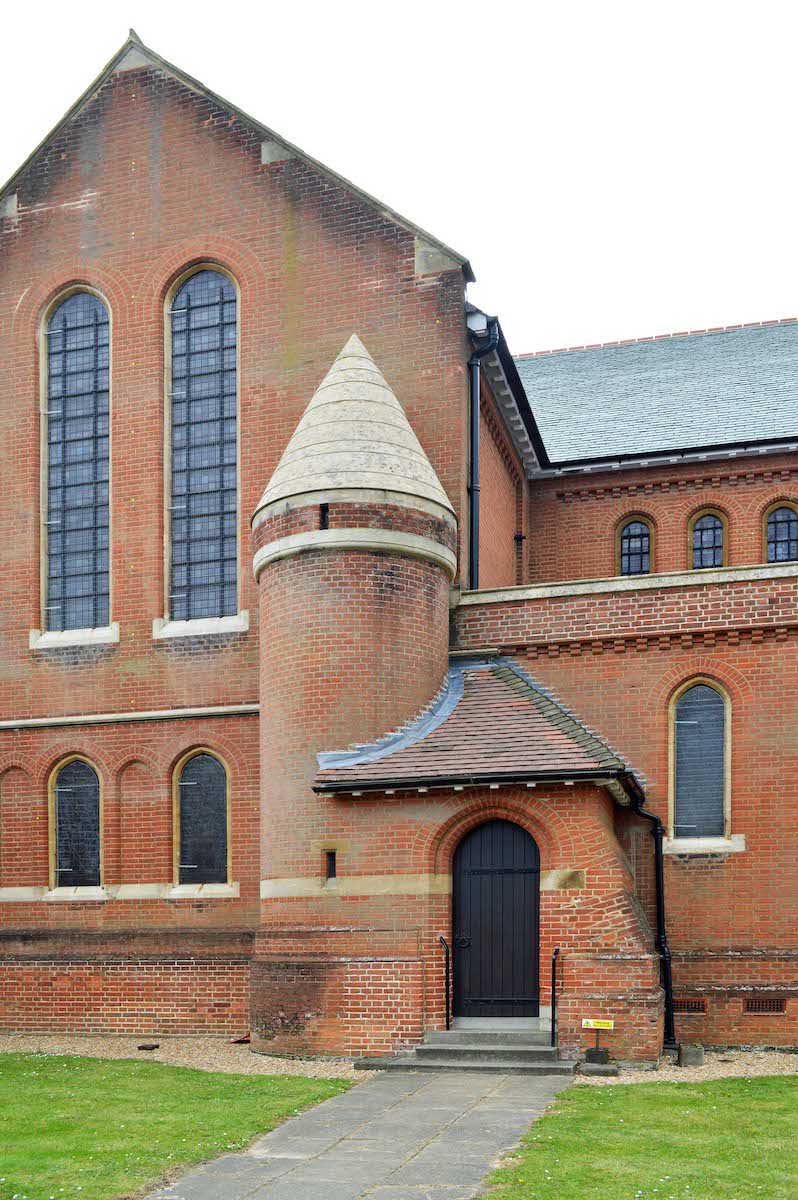
We shall find there is a mystery about the transepts – the North transept being shown here. Perhaps the conical tower gives access to the upper transept? The adjacent North porch gives entry to the Cathedral. ••• The church was designed in 1892 in the Early English Gothic Revival style by Ingers Bell and Aston Webb of the War Office.
3. NORTH WALL FROM THE EAST
The church was built by J. Davey of Brentwood and was dedicated to St George. Because the building was originally intended as the principal church for the Anglican chaplaincies of the British Army, the foundation stone was laid by Queen Victoria on 27 June 1892. The trowel and mallet she used in the ceremony are exhibited in the Cathedral’s Northeast porch.
4. NORTHEAST VIEW
The small clutter of buildings in this corner presumably contains vestries and offices. ••• St George’s was consecrated on 7 October 1893 by the Rev. Anthony Thorold, the Bishop of Winchester in the presence of Queen Victoria and other members of the Royal Family.
5. EAST WALL
The Catholics, in the meantime, were worshipping in the Church of St Michael and St Sebastian which had been erected in 1855 opposite the Louise Margaret Hospital. This church was a large wooden building not unlike a barn in appearance, and was constructed mainly of cast iron with internal wooden pillars. The nave had many windows filled with stained glass.
6. EAST WALL MEMORIAL STONE
We notice this memorial stone in the East wall. With date 1892, the stone was laid by Her Majesty Queen Victoria, Empress of India. ••• By the early 1970s St George’s was not required by the Anglican chaplaincies because the Church of England had two underused churches in the area while the number of Catholic soldiers was increasing. So, in 1973 the Cathedral became the seat of the Roman Catholic Bishop of the Forces instead, and was dedicated to St Michael and St George.
7. SOUTHEAST VIEW
The wooden Church of St Michael and St Sebastian, no longer being required as a Catholic place of worship, became an Army store until it burned down in 1983. The Royal Army Service Corps has had a very long and close association with the church, holding a memorial service there each year on a Sunday in July. The Corps’ Chapel of Remembrance stands to the South of the Sanctuary and contains memorials and books of remembrance.
8. ROYAL ARMY SERVICE CORPS MEMORIAL ARCH
Near the front of the Cathedral we find this War Memorial. It remembers the military personnel who gave their lives during the two Great World Wars. This Cathedral has a very close association with the Military, and we shall find many memorials here. The Cathedral was Grade II listed in 1979 for its special architectural and historic interest.
9. SOUTHWEST VIEW
The Cathedral is constructed of red brick with Portland stone facings. Perhaps the most striking aspect of this Cathedral from the outside is the immense tower and spire at the West end. The height of the spire makes it a prominent landmark. I am unable to determine whether it houses a set of bells.
10. WEST ENTRY
The main entry to the nave is through the double West doors at the base of the tower. There is a notice board and a supportive railing to one side. The windows on either side are interesting. There are three identical niches on each side: on the North side the outer niches are glazed, on the South side the two right-most niches are glazed.
11. ABOVE THE WEST DOORS
Above the main door is a relief of Saint George standing over the slain dragon. This reflects the history of the Cathedral with the original church being dedicated to St George. It is appropriate that St George and St Michael are patron saints for a military cathedral.
12. NAVE
We now enter the Cathedral through the West doors. The nave is long and divided into three parts lengthwise by two rows of Gothic arches. Unusually, part of the South nave has been partitioned off to make a chapel. A row of clear clerestory windows on either side gives light to the interior, and the lighting is assisted by electric rectangular flat panels at the tops of the columns.
13. NAVE ROOF
Six linking sections of angled rafters support the planking which holds the 16 tonnes of bespoke slate tiles which came from Westmorland Quarry in the heart of the Lake District in 2017. Slate has been extracted from the Honister Pass site in the centre of the Lake District for centuries and is the same source material as the Cathedral’s original roof, which dates from the late 1800s.
14. WEST NAVE
Standing in the middle of the nave and looking back we see the central West windows and the asymmetric windows to the sides. The central cross is flanked on either side by the West doors with a banner over each, and further out on each side, a brass memorial.
15. WEST WINDOWS
There are many beautiful windows in this Cathedral. Here we have to the left a portrayal of Jesus, the good Shepherd, Carrying the lost sheep. To the right is St George, one of the patron saints of this Cathedral, with the dragon lying defeated at his feet.
16. WEST BANNERS
Above the doors are two matching banners in white and gold. The left banner shows a cross with the traditional ‘Agnus Dei’, or Lamb of God, superimposed. At right is the risen and victorious figure of Christ, the nail holes showing in his hands and feet. Between the banners are a couple of draped cloths, perhaps relating to the Cross below.
17. CROSS AND HONOURS BOARDS
The central Cross is a Processional Cross, carried before clerical processions. On either side are very old brass memorials. The plate on the left commemorates men who died in the 1882 Egyptian Campaign – a conflict between the UK, and Egyptian and Sudanese forces. The plate on the right remembers soldiers dying in the South African War of 1899 – 1902 between Britain and the Boers.
18. BAPTISMAL FONT
Just inside the main West doors we find this simple octagonal baptismal font. Baptism is regarded as an initiation into the Church and into the Christian life, so it is appropriate to find the font right near the entrance to the Cathedral.
19. NORTH NAVE
Looking across to the North nave wall we can just see the five main windows. Between the windows are a variety of plaques and memorials. To the right is a cluster of brown memorials, reminding us perhaps of the tablets of the law in the Old Testament. Beyond them is the entry to the Lady Chapel. And in the green strip below the windows we see a number of the colourful Stations of the Cross. Finally, by the nearest column is a statue of the Virgin Mary.
20. THE VIRGIN MARY
Mary was a Jewish woman of Nazareth, and the mother of Jesus, according to the New Testament. She is described as a virgin: according to Christian theology she conceived Jesus through the Holy Spirit while still a virgin. The miraculous conception took place when she was already betrothed to Joseph. Mary has been venerated since early Christianity, and is considered by millions to be the most meritorious saint of the religion.


